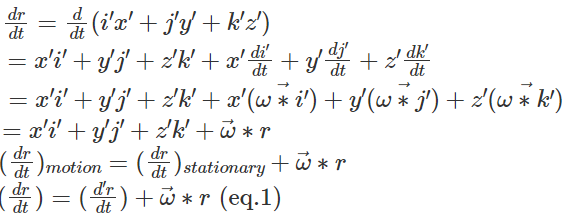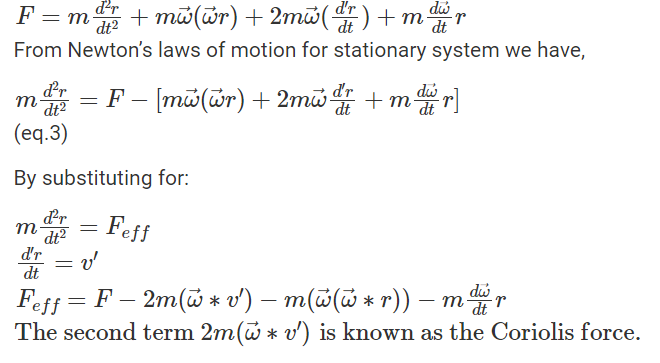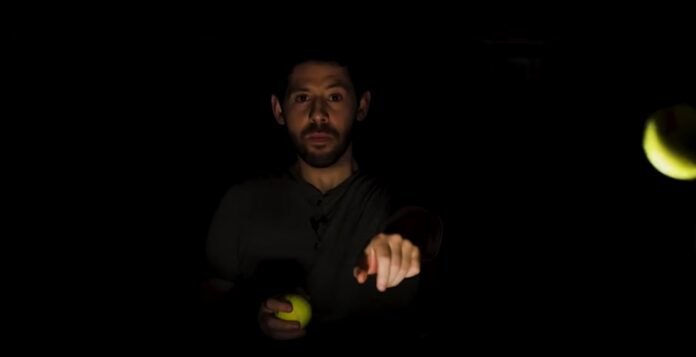Introduction
Coriolis force is an inertial or fictitious force that acts on the object with velocity V that are in motion within the frame of reference. If the frame of reference has a clockwise rotation, then the force acts to the left of the object and if the frame of reference has an anti-clockwise rotation, the force acts to the right of the object.The Coriolis effect is most apparent in the path of an object moving longitudinally. On Earth an object that moves along a north-south path, or longitudinal line, will undergo apparent deflection to the right in the Northern Hemisphere and to the left in the Southern Hemisphere. There are two reasons for this phenomenon: first, Earth rotates eastward; and second, the tangential velocity of a point on Earth is a function of latitude (the velocity is essentially zero at the poles and it attains a maximum value at the Equator). Thus, if a cannon were fired northward from a point on the Equator, the projectile would land to the east of its due north path. This variation would occur because the projectile was moving eastward faster at the Equator than was its target farther north. Similarly, if the weapon were fired toward the Equator from the North Pole, the projectile would again land to the right of its true path. In this case, the target area would have moved eastward before the shell reached it because of its greater eastward velocity. An exactly similar displacement occurs if the projectile is fired in any direction.
Causes of coriolis effect:
The deflection of an object due to the Coriolis force is called the Coriolis effect. The Coriolis effect is used to describe the Coriolis force experienced by the moving objects such that the force is acting perpendicular to the direction of motion and to the axis of rotation. The earth’s rotation is the main cause for the Coriolis effect as the earth rotates faster at the equator and near the poles the rotation is sluggish. This is because the rate of change in the diameter of the earth’s latitude increases near the poles.
The air currents in the Northern hemisphere bend to the right making the objects deflect to the right whereas in the Southern hemisphere the air currents bend to the left making the objects deflect to the left. The Coriolis effect is noticed only for the motions occurring at large-scale such as movement of air and water in the ocean. Example of Coriolis effect is change in weather patterns.
The key to the Coriolis Effect lies in Earth’s rotation. The earth rotates faster at the equator than it does at the poles. Earth being wider at the equator, the equatorial regions race nearly 1,600 kilometers per hour. At the poles, the earth rotates at a rate of 0.00008 kilometers per hour
Derivation of Coriolis Force
Consider two stationary frames of reference, one in space as x,y,z and the other in the body as x’,y’,z’. At time t=0, both the reference frames coincide.
The position vector at any given point P (x,y,z) in the stationary coordinate system is given as
r=r(t)
Where,
For Space set of axes:
For body set of axes.
For O(x’,y’,z’) system there is a change in i’,j’,k’ with a change in time but i,j,k are stationary.
The angular velocity is obtained as:
When the stationary system rotates with the angular velocity ꞷ, the rate of change of vector r with respect to system in motion is given:

Equation 1. is obtained by applying time derivative to the vector velocity. After differentiating the equation on both sides with respect to time we get,

In equation 2, is the centripetal equation given as:
The second term is known as Coriolis acceleration which is present when point r is in motion.
Therefore, Coriolis acceleration is given as:
From Newton’s laws of motion for moving system we have,
F=ma

Characteristics of Coriolis effect:
The Coriolis effect characteristics can be summarized as follows:
- Coriolis force is a fictitious force resulting from the rotational movement of the earth.
- Coriolis effect is effective on objects that are in motion such as wind, aircraft, ballistic and flying birds.
- Coriolis effect only affects the wind direction and not the wind speed as it deflects the wind direction from the expected path.
- The magnitude of Coriolis force is determined by wind speed. The higher the wind speed, the greater the deflection.
- Coriolis effect is maximum at the poles and zero at the equator.
- Coriolis force always acts in a direction that is perpendicular to the moving object’s axis.
Significance of coriolis effect:
The Coriolis effect has great significance in astrophysics and stellar dynamics, in which it is a controlling factor in the directions of rotation of sunspots. It is also significant in the earth sciences, especially meteorology, physical geology, and oceanography, in that Earth is a rotating frame of reference, and motions over the surface of Earth are subject to acceleration from the force indicated. Thus, the Coriolis force figures prominently in studies of the dynamics of the atmosphere, in which it affects prevailing winds and the rotation of storms, and in the hydrosphere, in which it affects the rotation of the oceanic currents. It is also an important consideration in ballistics, particularly in the launching and orbiting of space vehicles. In modern physics, application of a quantity analogous to Coriolis force appears in electrodynamics wherever instantaneous voltages generated in rotating electrical machinery must be calculated relative to the moving reference frame: this compensation is called the Christoffel voltage.
Recommended Articles:
Conventional And Non-conventional Sources Of Energy
Conventional Methods Measurements: Time, Length, And Weight
Convex Lens: Introduction, Difference, Uses, & Types
Convex Mirror: Introduction, Works, Formation, Properties, And Uses
Coriolis Effect: Introduction, Causes, Demonstration, And Characteristics
Newton’s second law of motion states “Force is equal to the rate of change of momentum. For a constant mass, force equals mass times acceleration”. The force experienced by the objects moving in fixed rotating coordinates is known as Coriolis force. A change in the weather pattern is an example of Coriolis force. Yes True Coriolis Effect FAQs
State Newton’s second law of motion?
What is coriolis force?
Give an example for coriolis force
Is the earth’s rotation the main cause for the Coriolis effect?
State true or false: The Coriolis effect is noticed in the movement of air and water in the ocean.
